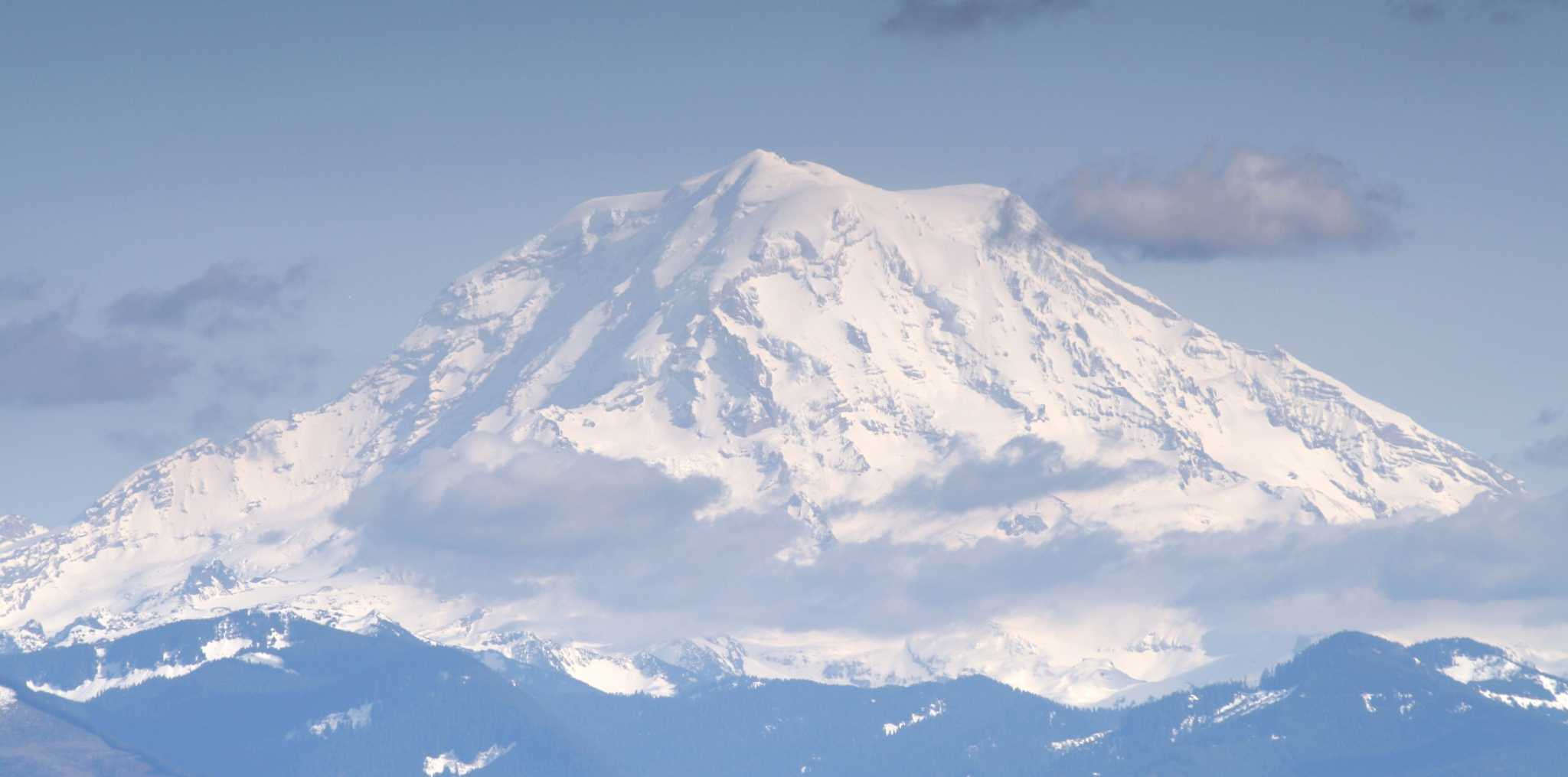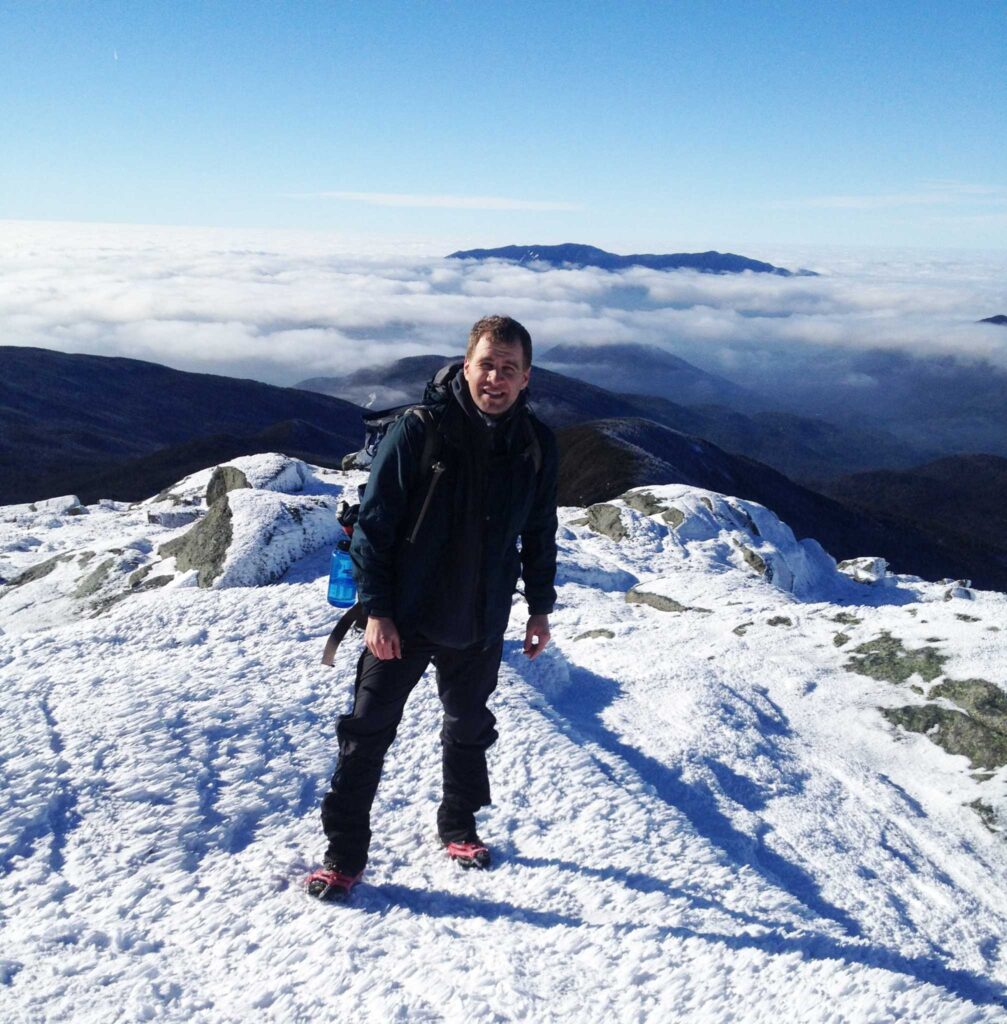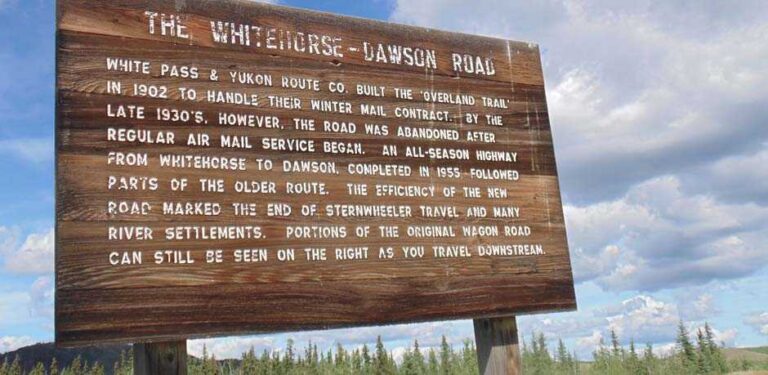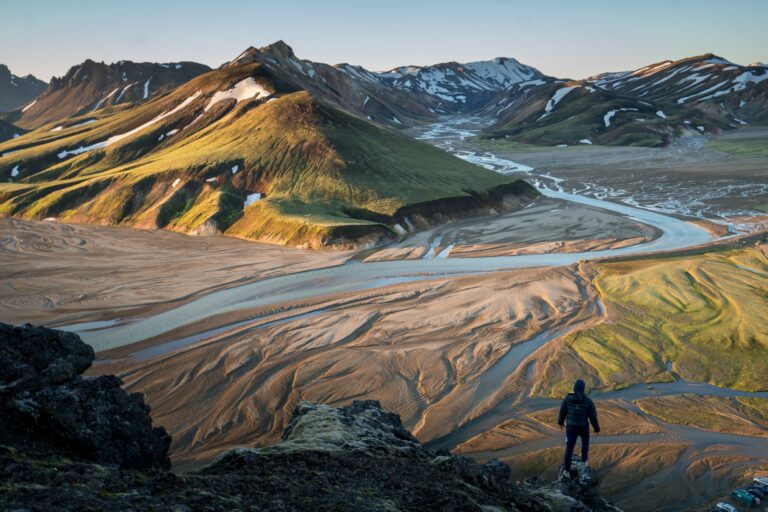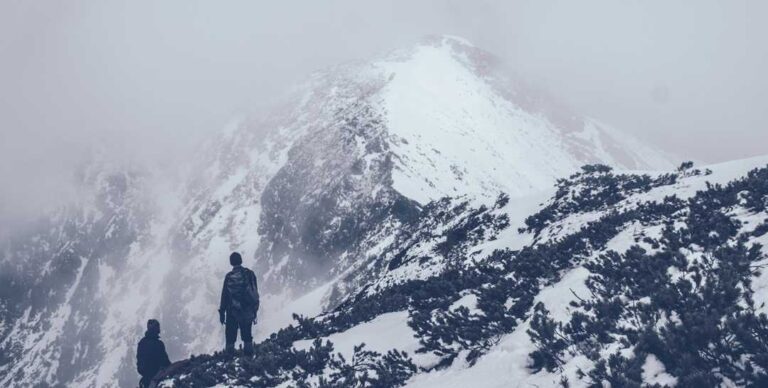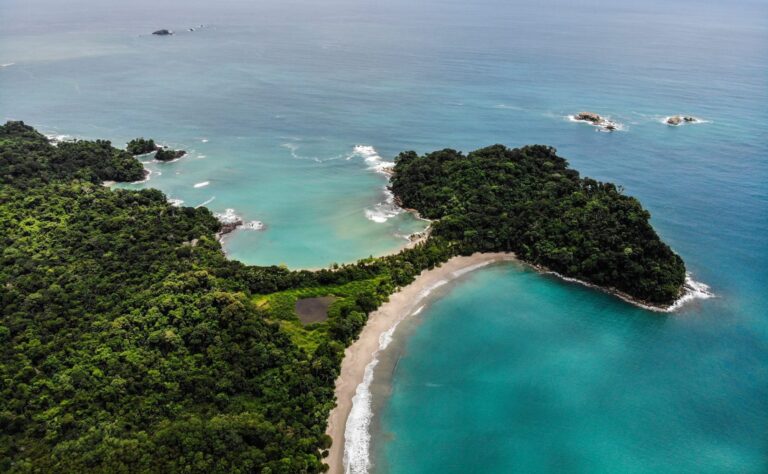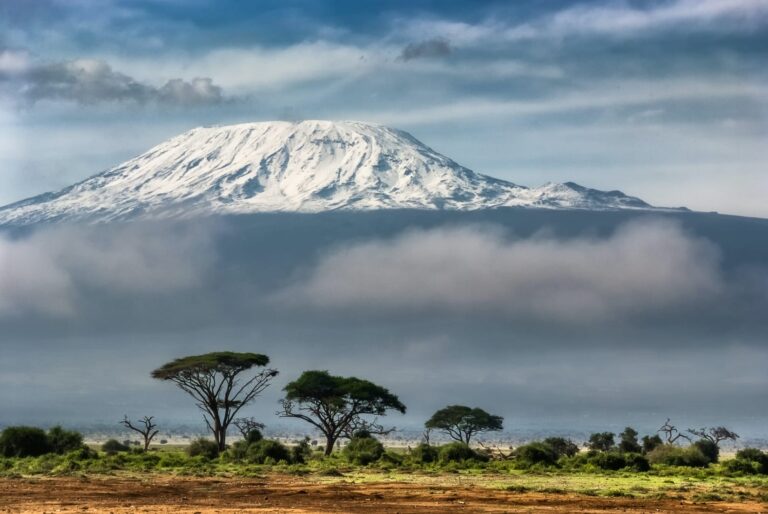What I Learned from Hiking the U.S. State High Points
At 11:30 PM on May 18th, 2013, the lights switched on and there was banging on the bunkhouse walls. “Wake up! Wake up! JJ, our lead guide, shouted. You have 30 minutes to get ready!” After a whopping 4 hours of sleep, the 18 of us groggily unzipped our sleeping bags at the RMI bunkhouse on Mount Rainier, 10,060 feet (3,066 m) above the clouds. We had spent the better part of 8 hours that day hiking from the parking lot at Paradise to Muir Camp. With freezing temperatures and the wind blowing outside we would put on our down parkas, head lamps, crampons, 50 lb (23 kg) packs and head toward the summit of Mt Rainier.
As we ascended up the 3-foot (0.9-m)wide ice ledges carved into the side of this massive glaciered volcano it became apparent to me that on this day I would not summit. I simply did not have the mountaineering experience on glaciers to safely continue forward and I made the wise decision to turn back.
Later that night as I lay in bed I was completely disillusioned. I questioned on whether I would ever climb or hike again. However, over the next few weeks my passion for the mountains held strong. I had heard about the High Pointers Club, a group dedicated to climbing the high points of all 50 U.S. states. I thought that this could be a perfect way to not only see the country but also to work my way back up to Rainier. The State High Points would provide me with the opportunity to train and test my skills on diverse mountainous environments. This would give me the experience to tackle some of the more advanced climbs in the United States.
There are some high points such as Britton Hill (Florida) and Jerimoth Hill (Rhode Island) that are simply a walk in the park but others are much more difficult and require peak physical conditioning combined with excellent mountaineering skills such as Mount Whitney (California), Mount Hood (Oregon), Granite Peak (Montana), and Gannett Peak (Wyoming).
Below is a list of the U.S. State High Points:
Rank by Elevation | U.S. State | Peak Name | Elevation
- Alaska | Denali | 20,310 feet (6,190 meters)
- California | Mount Whitney | 14,495 feet (4,418 meters)
- Colorado | Mount Elbert | 14,433 feet (4,399 meters)
- Washington | Mount Rainier | 14,411 feet (4,392 meters)
- Wyoming | Gannett Peak | 13,804 feet (4,207 meters)
- Hawaii | Mauna Kea | 13,796 feet (4,205 meters)
- Utah | Kings Peak | 13,528 feet (4,123 meters)
- New Mexico | Wheeler Peak | 13,161 feet (4,011 meters)
- Nevada | Boundary Peak | 13,140 feet (4,005 meters)
- Montana | Granite Peak | 12,799 feet (3,901 meters)
- Idaho | Borah Peak | 12,662 feet (3,859 meters)
- Arizona | Humphreys Peak | 12,633 feet (3,851 meters)
- Oregon | Mount Hood | 11,239 feet (3,436 meters)
- Texas | Guadalupe Peak | 8,749 feet (2,667 meters)
- South Dakota | Harney Peak | 7,242 feet (2,207 meters)
- North Carolina | Mount Mitchell | 6,684 feet (2,037 meters)
- Tennessee | Clingmans Dome | 6,643 feet (2,025 meters)
- New Hampshire | Mount Washington | 6,288 feet (1,917 meters)
- Virginia | Mount Rogers | 5,729 feet (1,746 meters)
- Nebraska | Panorama Point | 5,426 feet (1,654 meters)
- New York | Mount Marcy | 5,344 feet (1,629 meters)
- Maine | Katahdin | 5,268 feet (1,606 meters)
- Oklahoma | Black Mesa | 4,973 feet (1,516 meters)
- West Virginia | Spruce Knob | 4,861 feet (1,482 meters)
- Georgia | Brasstown Bald | 4,784 feet (1,458 meters)
- Vermont | Mount Mansfield | 4,393 feet (1,339 meters)
- Kentucky | Black Mountain | 4,139 feet (1,262 meters)
- Kansas | Mount Sunflower | 4,039 feet (1,231 meters)
- South Carolina | Sassafras Mountain | 3,554 feet (1,083 meters)
- North Dakota | White Butte | 3,506 feet (1,069 meters)
- Massachusetts | Mount Greylock | 3,487 feet (1,063 meters)
- Maryland | Backbone Mountain | 3,360 feet (1,024 meters)
- Pennsylvania | Mount Davis | 3,213 feet (979 meters)
- Arkansas | Magazine Mountain | 2,753 feet (839 meters)
- Alabama | Cheaha Mountain | 2,405 feet (733 meters)
- Connecticut | Mount Frissell-South Slope | 2,372 feet (723 meters)
- Minnesota | Eagle Mountain | 2,301 feet (701 meters)
- Michigan | Mount Arvon | 1,978 feet (603 meters)
- Wisconsin | Timms Hill | 1,951 feet (595 meters)
- New Jersey | High Point | 1,803 feet (550 meters)
- Missouri | Taum Sauk Mountain | 1,772 feet (540 meters)
- Iowa | Hawkeye Point | 1,670 feet (509 meters)
- Ohio | Campbell Hill | 1,549 feet (472 meters)
- Indiana | Hoosier Hill | 1,257 feet (383 meters)
- Illinois | Charles Mound | 1,235 feet (376 meters)
- Rhode Island | Jerimoth Hill | 812 feet (247 meters)
- Mississippi | Woodall Mountain | 806 feet (246 meters)
- Louisiana | Driskill Mountain | 535 feet (163 meters)
- Delaware | Ebright Azimuth | 442 feet (135 meters)
- Florida | Britton Hill | 345 feet (105 meters)

Climbing has taught me a lot about life and one of the most important lessons that I have learned is that it is best to accomplish your big goals in small and manageable tasks. It might sound cliché, but by taking this approach you will focus on the journey not the destination. Each lesson and experience along your path will become a part of you and make you stronger for when you finally reach that big moment.
In my time since Rainier, the High Points challenge has taken me across the country. From Mount Marcy, the highest peak in New York to Mount Washington, which had the second fastest recorded winds on Earth, I have been methodically ticking high point after high point off my list. While I would love to have this list completed in the next few years and take another shot at Rainier I know that it is best for me to take my time and enjoy the journey.
If you would like to learn more about our adventures click HERE or if you have hiked one of the U.S. State High Points we would love to hear about it just shoot us an email at info@explorerspassage.com.
I look forward to seeing you on the trail!
Cheers,
Jeff
Jeff Bonaldi
Founder & CEO
The Explorer’s Passage
About Jeff Bonaldi
Jeff Bonaldi is the Founder and CEO of The Explorer’s Passage, a premier adventure travel company. His mission is to provide travelers with the opportunity to transform their lives and the planet through the power of adventure.
Learn more about Jeff’s story and his company HERE.
[rad_rapidology_inline optin_id=”optin_3″]
Share this post!

